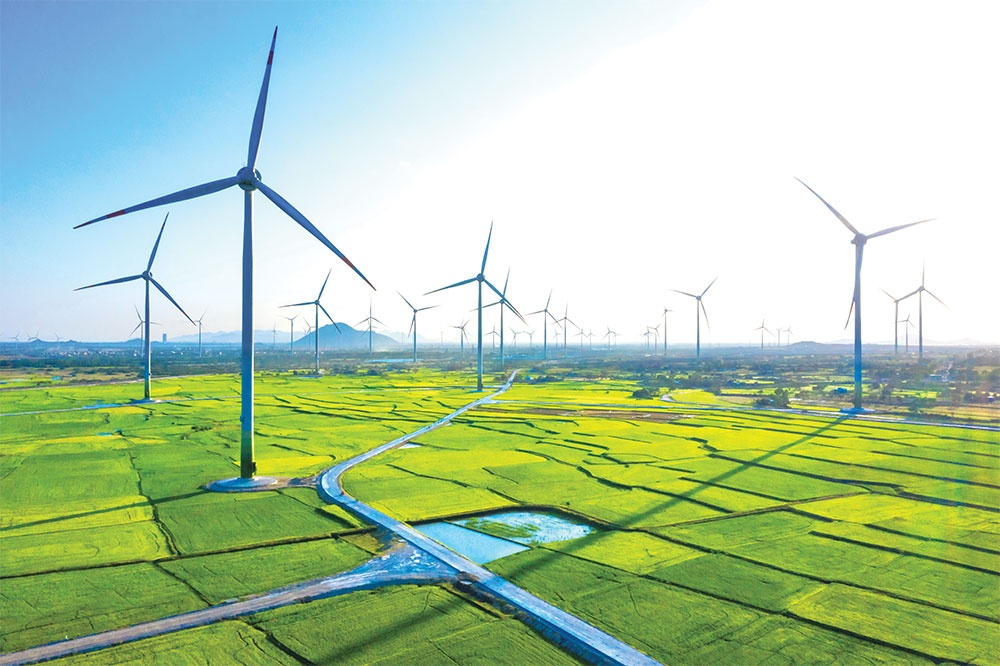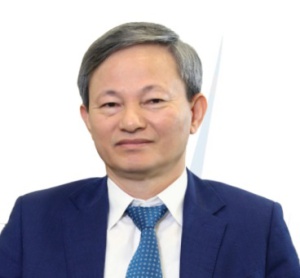
March 30 was the deadline for investors of transitional power plants in Vietnam to cooperate with Electricity of Vietnam (EVN) to reach an agreement on the final price of electricity for such renewables projects.
However, EVN’s Electricity Power Trading Company was not contacted by companies like Ninh Thuan Energy Industry JSC. “We want to be able to negotiate a 3-year pricing cycle instead of having to renegotiate every year,” said the company’s general director Le Manh Ha.
He expects that the authorities will permit “conversion prices to USD and adapt to exchange rate changes or rules on price slippage and power price inflation” in the renewable power purchase agreement (PPA) price bracket that may be published after March 30.
Elsewhere, those involved with the Nexif Energy Ben Tre wind power project were unable to finish the necessary documentation owing to difficulties with expired agreements with EVN’s member units, according to Tran Thi Thuy Duong, the project’s business development director.
“Enterprises did not purposefully withhold cooperation in order to engage in discussions,” Duong said, referencing a meeting with EVN on March 20.
It was reported that the general director of EVN agreed to accept deadline extensions, but its member units did not consent since “there was no clear directive” from the group’s head.
The energy pricing structure of the Ministry of Industry and Trade (MoIT) does not accurately represent the link with the rise in EVN’s retail power price, Duong added. According to her, if the economic internal rate of return is increased to 10 per cent, the selling price of energy will be 9.6 cents per kWh for the offshore wind generating plant.
According to the current price bracket, the average retail price of electricity has risen in comparison to the price bracket defined in 2017. According to Duong, the new average retail price of power has risen from 0.9 to 2.4 cents per kWh; however, the electricity purchase price bracket for transition projects has decreased significantly to 21 from 29 per cent in comparison to the old feed-in tariffs (FiT).
With the exception of one project for which a price was negotiated, many investors disagreed with the published price range. According to Do Van Binh, chairman of Ocean Renewable Energy JSC, this pricing range leaves enterprises unable to afford expenses, putting them in danger of bankruptcy.
A representative of Thailand’s Gulf Energy Development Company, Somchak Chutanan, concurred, stating that the low price offered by the MoIT made it impossible to undertake the project. Since the fixed price of solar power is also more competitive than that of coal and gas energy, he wishes to calculate more with the advisors, using more suitable input parameters to get better outcomes, he said.
Investors broadly believe that the MoIT and EVN have not yet agreed on a formula for determining the selling price of power. In documents issued in January and March, the MoIT urged EVN and investors in transitional power plants to reach an agreement on the development of the electricity price. Yet, neither document specified the procedure for determining the selling price of power.
At the end of 2022, EVN had deployed almost 77,800MW of power sources throughout the whole system, an increase of around 1,400MW from 2021. Last year, solar and wind energy accounted for 12.8 per cent of total system production.
According to the most recently released draft of the Power Plan Development VIII, Vietnam may utilise up to 50,000MW of capacity with an output of more than 160 billion kWh by 2030 and up to 260,000MW by 2050 if there is an appropriate support policy.
According to the Binh Thuan Wind and Solar Energy Association, 2,090MW of finished ventures are ready to produce power. During the PPA discussion, many investors demanded that they be placed into operation and compensated for investors, when signed for an extended period of time.
In the meantime, other investors are willing to pay temporary operating expenses and transfer already-existing power to the grid for half the cost of renewable energy.
| Pham Nguyen Hung – Deputy director, Electricity and Renewable Energy Authority, MoIT |
 Several investors had exerted considerable effort to get project or portion of them operational before the FiT price expired at the end of 2021. To assure fairness, however, the FiT pricing method was only used for a limited period of time.Presently, the largest incentive mechanism is the FiT price, which is no longer accessible; instead, energy generating rates are negotiated based on the MoiT and EVN’s guiding papers. The MoIT issued Decision No.21/QD-BCT dated January 7 about the ceiling price band (excluding added value) for terrestrial solar power plants at 5 cents per kWh, energy floating solar at 6.4 cents per kWh, inland wind at 6.8 cents per kWh, and offshore wind at 7.7 cents per kWh. Several investors had exerted considerable effort to get project or portion of them operational before the FiT price expired at the end of 2021. To assure fairness, however, the FiT pricing method was only used for a limited period of time.Presently, the largest incentive mechanism is the FiT price, which is no longer accessible; instead, energy generating rates are negotiated based on the MoiT and EVN’s guiding papers. The MoIT issued Decision No.21/QD-BCT dated January 7 about the ceiling price band (excluding added value) for terrestrial solar power plants at 5 cents per kWh, energy floating solar at 6.4 cents per kWh, inland wind at 6.8 cents per kWh, and offshore wind at 7.7 cents per kWh.EVN has been instructed to negotiate and standardise electricity generating costs in accordance with the Law on Electricity and the necessary contents of solar power plants and transitional wind power plants. The MoIT requested, based on current norms, that EVN expeditiously coordinate with investors of wind and solar power projects to advance the agreement and achieve the unification of energy pricing by the end of March in order to expeditiously bring the plants into operation and minimise waste. |
| Tran Dinh Nhan – General director, Electricity of Vietnam |
 EVN has developed a draft technique for assessing the cost of electricity production for transitional renewable energy projects and requested that the MoIT review and approve it. This technique of computation is based on discounted cash flow to ensure investors pay fair expenditures; the internal rate of return cannot exceed 12 per cent, and the price falls within the specified price range.EVN anticipates that the MoIT will soon have a paper outlining the negotiating procedure, which will serve as a guide for investors. EVN has developed a draft technique for assessing the cost of electricity production for transitional renewable energy projects and requested that the MoIT review and approve it. This technique of computation is based on discounted cash flow to ensure investors pay fair expenditures; the internal rate of return cannot exceed 12 per cent, and the price falls within the specified price range.EVN anticipates that the MoIT will soon have a paper outlining the negotiating procedure, which will serve as a guide for investors.Currently, EVN is negotiating prices based on the MoIT-issued pricing range, which outlines the following three conditions: the customer has signed a PPA with EVN but does not fulfil the requirements for applying the electricity purchase price established; every industrial or manufacturer portion must strictly comply with the investment and construction laws; and the electricity pricing mechanism is conformed to at the time of implementation. EVN anticipates the close collaboration of investors in producing the negotiating papers, with the hope that the transitional projects will be implemented as soon as feasible on the basis of regulatory compliance. |
| Bui Van Thinh – President, Binh Thuan Wind and Solar Energy Association |
 Current regulations cause investors anxiety owing to legal flaws and investors’ lack of financial efficiency. In Circular No.01/2023/TT-BCT, the MoIT repeals three regulations mentioned in previous documents: the time limit for applying the electricity purchase price within 20 years, the terms for converting electricity purchase money into USD, and the provision on the obligation to purchase the entire output of a grid-connected wind power project at the delivery point.The price range was established without independent assistance, and the length of the purchase price for power is uncertain. No investor has the courage to negotiate the PPA price for a full year and must do it again the following year. Current regulations cause investors anxiety owing to legal flaws and investors’ lack of financial efficiency. In Circular No.01/2023/TT-BCT, the MoIT repeals three regulations mentioned in previous documents: the time limit for applying the electricity purchase price within 20 years, the terms for converting electricity purchase money into USD, and the provision on the obligation to purchase the entire output of a grid-connected wind power project at the delivery point.The price range was established without independent assistance, and the length of the purchase price for power is uncertain. No investor has the courage to negotiate the PPA price for a full year and must do it again the following year.If the energy purchase price bracket is implemented in a short period of time, financial institutions would be unable to determine the efficiency of capital investment, and investors would not have access to money. Since these transitional power projects have been built for a long period of time, the investors are all eager to bargain the energy price. Investors are now awaiting a directive from the government instructing the MoIT to change the new energy generation pricing mechanism for the transition project to reflect the real circumstances. |
| Nguyen Thi Thanh Binh – President, T&T Energy JSC |
 Investors want a pricing structure that reflects reality. Accordingly, we advise the MoIT to re-evaluate the price structure. Clarifying the idea to enable the mobilisation of capacity from already-built plants, developing a new pricing structure, and negotiating particular energy purchase rates based on a price band for each transitional project would take some time.Therefore, while waiting for the new policy, the investor proposes that the MoIT and related units be directed to allow transitional projects whose construction investment has been completed to be put into operation, record the output on the grid, and be compensated for this output after completing electricity price negotiations under the new price bracket. Investors want a pricing structure that reflects reality. Accordingly, we advise the MoIT to re-evaluate the price structure. Clarifying the idea to enable the mobilisation of capacity from already-built plants, developing a new pricing structure, and negotiating particular energy purchase rates based on a price band for each transitional project would take some time.Therefore, while waiting for the new policy, the investor proposes that the MoIT and related units be directed to allow transitional projects whose construction investment has been completed to be put into operation, record the output on the grid, and be compensated for this output after completing electricity price negotiations under the new price bracket.This method is intended to prevent the waste of societal resources, since many projects have been finished for up to two years but have yet to be placed into operation, while EVN is forced to deploy alternative power sources with greater costs than renewable energy. The country’s current floor price for imported wind energy is 6.95 cents per kWh. Thus, it is advised that the projects be finished and grid-ready. There is no need to invest in transmission, so the floor price is calculated temporarily at 90 per cent of the price of imported power, and then the official price is determined using the retroactive and clearing concept. |
Hai Van




